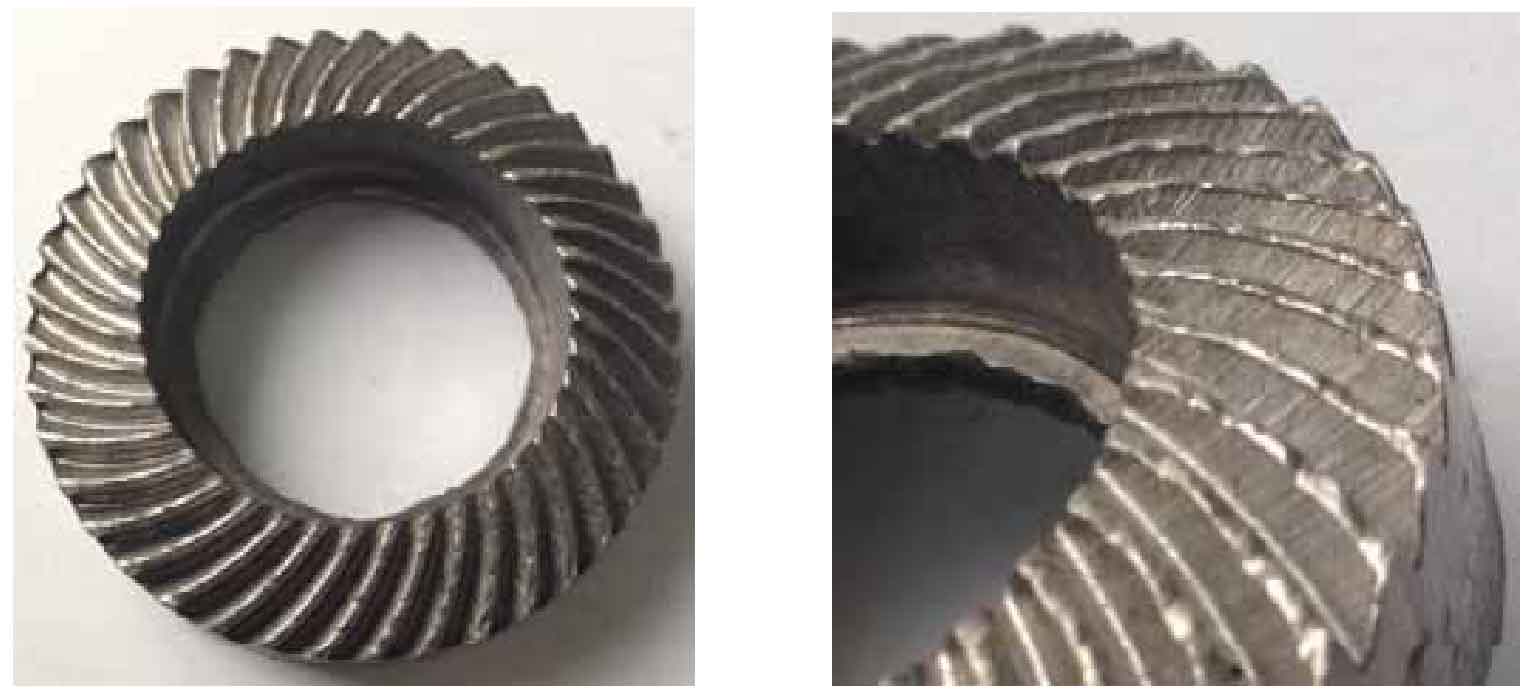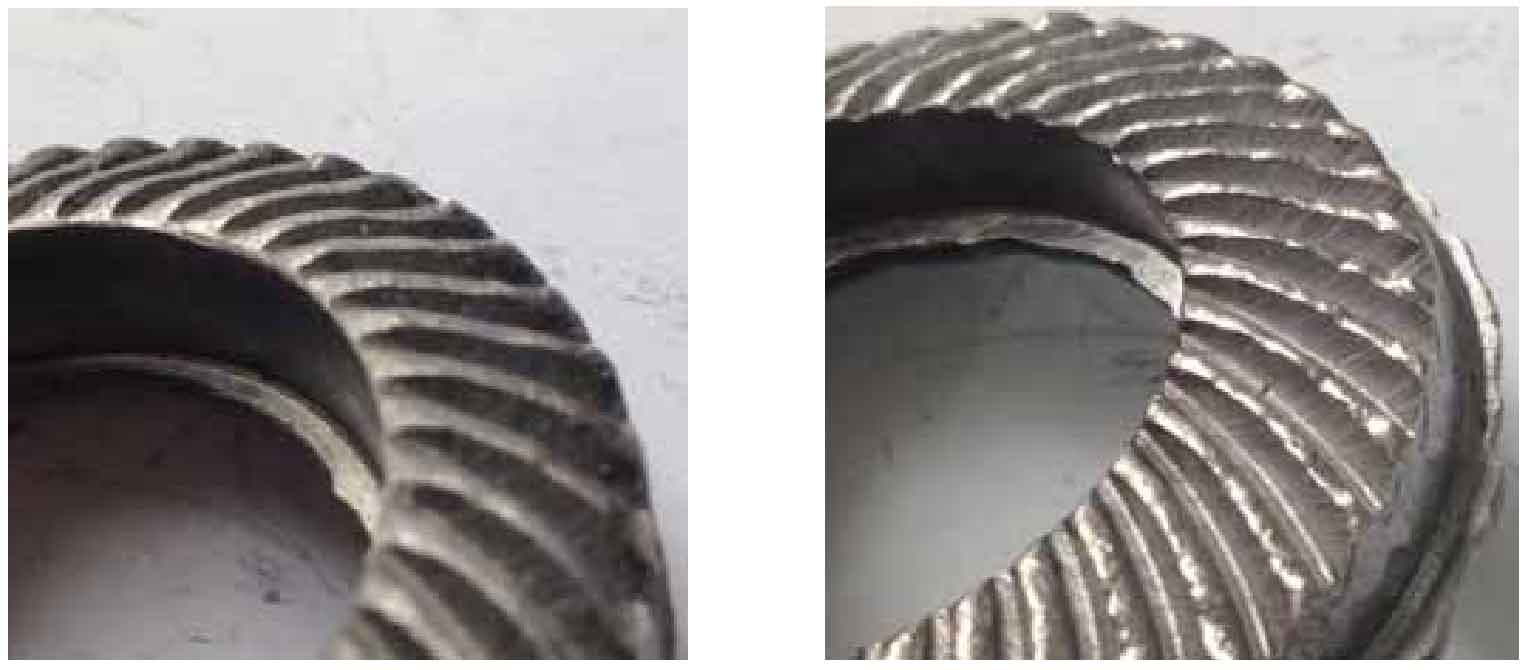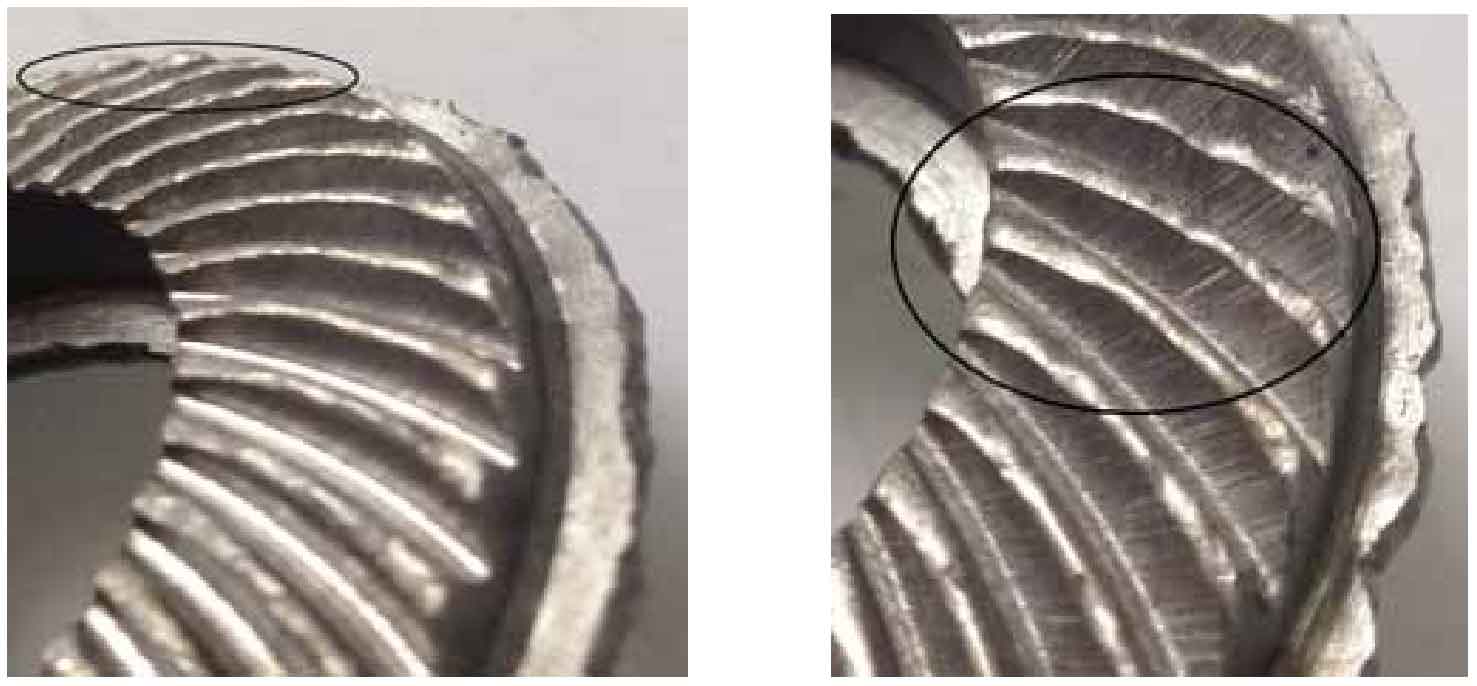By changing the die structure and the cone angle of lead billet, the test is carried out on the universal material testing machine to study the influence of process scheme and process parameters on forming, and verify the accuracy of numerical simulation results.
1. Research on process scheme
Select the lead blank with the same volume and shape, change the die structure, set the pressure of the universal material testing machine to 180kn for forming test, and observe the tooth filling under each process scheme. Through comparison, it can be seen that the helical bevel gear formed by the double split process scheme (Fig. 1-A) is fuller than the helical bevel gear formed by the internal split process scheme (Fig. 1-B). It can be concluded that the forming force of double split precision forging scheme is lower than that of internal split precision forging scheme.
2.Study on the position of diversion surface
Select the double split precision forging process scheme, adjust the extrusion force of the universal testing machine to 180kn, select the lead blank, adjust the die structure and carry out the test. Observe the tooth filling fullness of different diversion surface positions. Through comparison, it can be seen that the position of the outer diversion surface is too high (Fig. 2-A) or too low (Fig. 2-B), and the tooth filling is not full enough. Only when the appropriate position is selected, the tooth filling is full (Fig. 1-A). This position can avoid the premature outflow of metal materials from the diversion gap and improve the utilization rate of materials.
3. Study on cone angle of preform
The pressure of the universal material testing machine is set to 180kn. The test is carried out under the condition of ensuring the same volume by changing the cone angle of the lead blank. The test results are shown in Figure 3. When the cone angle of the lead blank is too small, the large end of the tooth shape cannot be filled (Figure 3-A). When the cone angle of the lead blank is too large, the middle part of the tooth shape cannot be filled in time (Figure 3-B). The correctness of the numerical simulation results can be verified by comparing Fig. 3-A with FIG. 3-b.




